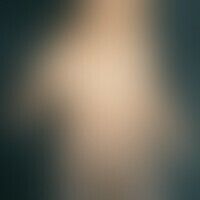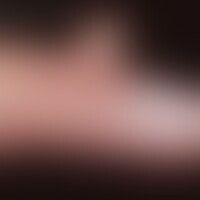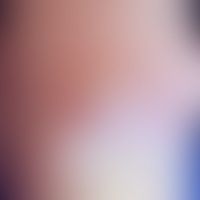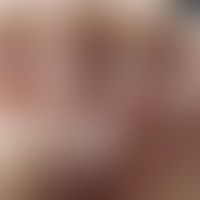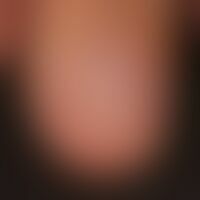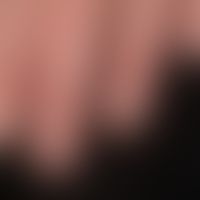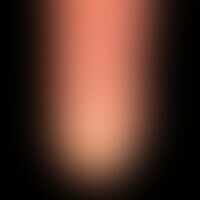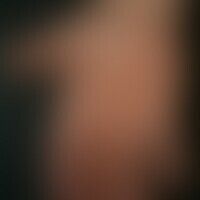Image diagnoses for "Finger", "skin-colored"
16 results with 19 images
Results forFingerskin-colored
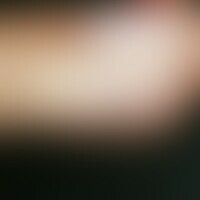
Hamartoma eccrines D23.L
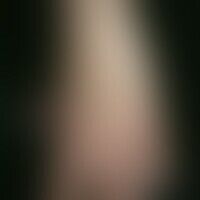
Neurofibromatosis (overview) Q85.0
Type I Neurofibromatosis, peripheral type or classic cutaneous form. Permanent, multiple, skin-coloured, calotte-like bulging, soft, smooth papules and nodules in the area of the back of the hand and the sides of the fingers. Positive bell-button phenomenon: subcutaneous tumours protruding like hernia through the skin can be pushed back with one finger.
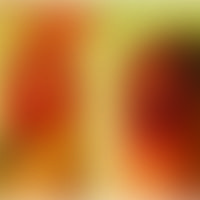
Dorsal cyst mucoid D21.1
Dorsal (mucoid) cyst. A photo collage of 4 photos.
Painless cyst (mucocyst) on the index finger, existing for about 1 year. An onychodystrophy, longitudinal depression is already visible due to the formation of nodules.
First picture: Before the operation. Anesthesia followed after Colonel, finger blockage.
Second image: A small ''window'' was opened to remove the cyst.
Third picture: After complete removal of the cyst, the window was closed and sutured shut.
Fourth picture: Post-op photo after 6 months. The picture shows the healthy grown (without deepening) nail, the pain has disappeared.
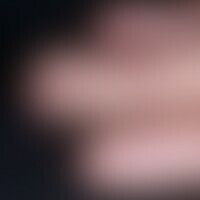
Eccrine angiomatous hamartoma Q85.8
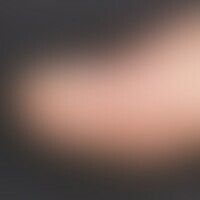
Dyshidrosis L30.1
Dyshidrosis: Multiple, acutely occurring, skin-coloured, isolated but also aggregated, smooth, itchy vesicles in the groin skin, existing for 4 days, 0.1-0.3 cm in size; progression in stages; increased in the warm seasons.
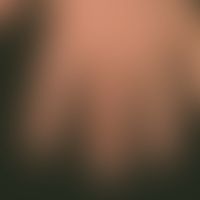
Granuloma annulare subcutaneum L92.0
Granuloma anulare subcutaneum. multiple chronically stationary, firm, symptomless, subcutaneously located nodes. persistent for several years. resistant to therapy.
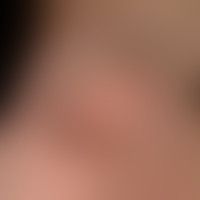
Psoriasis palmaris et plantaris (plaque type) L40.3
Psoriasis palmaris et plantaris (plaque type): A minus variant with affection of the acral thumb area, forming deep and painful (therapy-resistant) rhagades.
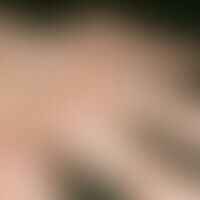
Heberden's knot M15.1
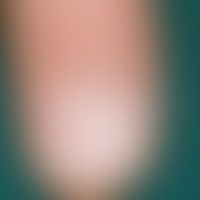
Dorsal cyst mucoid D21.1
Dorsal cyst, mucoid: painless, approximately 1.0 cm large, skin-coloured, plump, elastic, surface-smooth "nodule" (cyst) which has existed for about 1 year and from which a gelatinous substance has been evacuated at the proximal end (crust-covered part) under pressure, whereby the whole nodule has disappeared. As shown here, a pressure-induced groove-shaped nail dystrophy may occur in the case of longer existing "dorsal cysts".
